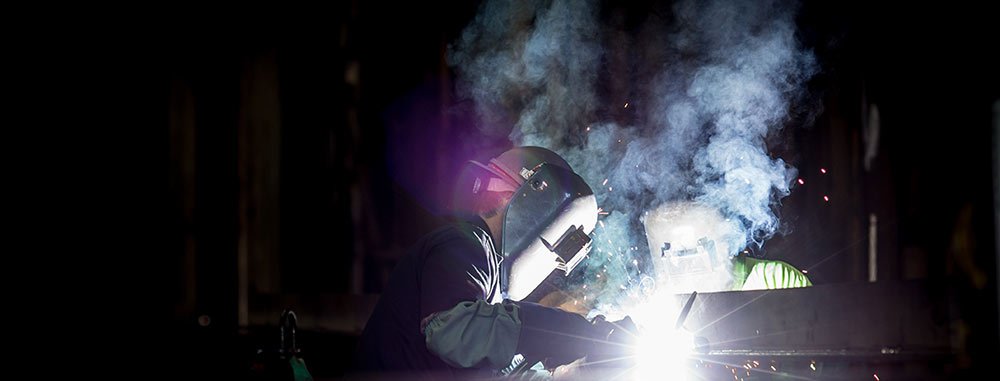Welding gases & fumes Exposure
3 min readWelding gases and fumes pose a serious threat to anyone who inhales them. Every welding project emits a different combination of gases. The fumes can cause occupational asthma and damage the nervous system. Keeping your head out of the plume while welding is one of the best ways workers can protect themselves from harmful exposure.

How workers are exposed
Welders are at the highest risk for exposure to welding gases and fumes, but anyone who works near a welder can also inhale welding fumes. This is especially true indoors or in confined spaces. In those areas, fumes can’t dissipate and hazardous levels can build up. Workers in an enclosure or confined space with a welder should assume that they are at the same level of risk as the welder.
The dangers to workers
Welding fumes are made of many different metallic components. Each fume will be different depending on the material being welded, the electrode, and the type of welding. The airborne gases and fumes produced or present during welding can include:
- Nitrous oxide
- Carbon dioxide
- Carbon monoxide
- Shielding gases like argon or helium
- Ozone
- Metal fumes such as manganese and chromium
There are health effects for both short-term and long-term exposure to these gases and fumes. They include:
| Short-term exposure |
|
| Long-term exposure |
|
How to reduce the risks
The best way to reduce the risk of exposure to welding gases and fumes is to eliminate the source of exposure. If that’s not possible, there are other risk controls to use. When choosing risk controls, start by asking the questions in the following steps, listed in order of effectiveness.
Elimination or substitution
Eliminating the hazard by substituting a safer process or material, where possible, is the most effective control. Some questions to consider:
- Can less hazardous materials (like manganese-free welding rods) be used?
- Can a process that generates fewer gases or fumes be used, such as cold joining?
- Can CAD/3D designs be used to reduce the amount of welding?
Engineering controls
Making physical modifications to facilities, equipment, and processes can reduce exposure. Some questions to consider:
- Can general ventilation be improved?
- Can fans be set up to move the smoke away from the welder and other workers?
- Can local exhaust ventilation be used to remove contaminated air?
- Can turntables be used so welders can sit and position the material so gases and fumes don’t cross their face?
Administrative controls
Changing work practices and work policies, and using awareness tools and training can limit the risk of exposure to welding gases and fumes. Some questions to consider:
- Has an exposure control plan been developed?
- Can warning signs be posted in the work area?
- Can workers be scheduled away from areas being used for large welding jobs?
- Can change areas provide separate stations for work and street clothes?
- Can a hygiene awareness program be implemented?
Personal protective equipment
This is the least preferred control. It must always be used in addition to at least one other control. Some questions to consider:
- Do workers have appropriate respirators, eyewear, and protective clothing?
- Have workers been fit-tested to ensure respirators are working effectively?
- Has personal protective equipment been verified to ensure it is working properly?




1 thought on “Welding gases & fumes Exposure”